Results 7,001 to 7,010 of 12091
Thread: Anandtech News
-
05-25-17, 10:17 AM #7001
Anandtech: Fractal Design Unveils Focus G Series Cases
Fractal Design has just launched two new cases under the banner of the new Focus G series. The Focus G is a standard ATX mid-tower, while the Focus G Mini features a more compact footprint and is intended for Micro-ATX and Mini-ITX builds. While both models will be offered in black, the larger Focus G will also be offered in white and a brand new choice of Gunmetal Gray, Mystic Red, and Petrol Blue. This multiple color option is a first for Fractal Design.
The Focus G series is manufactured using a combination of steel and plastic as you would expect from a cost-conscious case series. What you wouldn't necessarily expect in 2017 are the two external 5.25” drive bays. Size and color differences aside, these two models are effectively twins and they share numerous key features.
Both cases have a large side panel window, removeable and vibration dampened storage drive bays, 18mm to 25mm of cable routing room behind the motherboard tray, and a front I/O panel that includes one USB 3.0 port, USB 2.0 port, and two audio jacks. When it comes to fans, both models have a total of six 120mm fan mounts, four of which can also hold 140mm fans (three on the Focus G Mini). There are removable dust filters everywhere but the rear. Fractal Design has included two front-mounted Silent Series LL 120mm LED fans that glow white light through the front mesh.
These Focus G series models also have extensive liquid cooling support, with radiator mounts in the front, rear, and the top of the cases. Those more interested in air cooling will be able to fit heatsinks that are up to 165mm tall, which means just about every cooler on the market. Both models can also handle graphics cards up to 380mm long, while power supply depth is a very spacious 230mm. The other similarity is that both models are going to retail for $49.99 USD, which places them firmly in the competitive budget case market.Fractal Design Focus G Series Focus G Focus G Mini Motherboard Size ATX, Micro-ATX, Mini-ITX Micro-ATX, Mini-ITX Drive Bays External - - Internal 2 × 2.5" or 3.5" and 1 × 2.5" 2 × 2.5" or 3.5" and 1 × 2.5" AIB Bays Internal 7, up to 380 mm cards are supported 4, up to 380 mm cards are supported Cooling Front 2 × 120 mm or 2 × 140 mm 2 × 120 mm or 1 × 140 mm Rear 1 × 120 mm 1 × 120 mm Top 2 × 120 mm or 2 × 140 mm 2 × 120 mm or 2 × 140 mm Middle - - Bottom 1 × 120 mm 1 × 120 mm Radiator Support Front 1 × 120/240 mm or 140/280 mm 1 × 120/240 mm or 140 mm Rear 1 × 120 mm 1 × 120 mm Top 1 × 240 mm 1 × 240 mm Middle - - Bottom - - I/O Port 1 × USB 2.0
1 × USB 3.0
1 × Headphone
1 × Mic1 × USB 2.0
1 × USB 3.0
1 × Headphone
1 × MicPower Supply Size Up to 230 mm Up to 230 mm Dimensions - - Colors Multiple colors Black Features Large side window panel Large side window panel Price $49.99 $49.99
We have no word on availability, but sometime after Computex is a firm bet.
Related Reading- Fractal Design Launches New S24 and S36 Celsius AIO Liquid Coolers
- The Fractal Design Node 202 Case Review: Mini-ITX Gaming For the Living Room
- Fractal Design Node 804 Case Review
Gallery: Focus G





Gallery: Focus G Mini





More...
-
05-26-17, 06:52 AM #7002
Anandtech: NVIDIA Announces GeForce MX150: Entry-Level Pascal for Laptops, Just in Ti
This morning NVIDIA has taken the wraps off of a new video card for laptops, the GeForce MX150. Aimed at the entry-level market for discrete GPUs – that is, laptops that need performance only a bit above an integrated GPU – the MX150 is NVIDIA’s Pascal-based successor to the previous 930M/940M series of laptop adapters that have been in computers over the last couple of years. Today’s reveal is undoubtedly tied to next week’s Computex trade show, so we should expect to see a number of laptops using the new adapter announced in the coming days.
From a technical perspective, details on the GeForce MX150 are very limited. Traditionally NVIDIA does not publish much in the way of details on their low-end laptop parts, and unfortunately the MX150’s launch isn’t any different. We’re still in the process of shaking down NVIDIA for more information, but what usually happens in these cases is that these low-end products don’t have strictly defined specifications. At a minimum, OEMs are allowed to dial in clockspeeds to meet their TDP and performance needs. However in prior generations we’ve also seen NVIDIA and OEMs use multiple GPUs under the same product name – mixing in GM107 and GM108, for example – so there’s also a strong possibility that will happen here as well.
Officially, all NVIDIA says about the new video card is that it uses GDDR5 and that it offers around 33% better performance than the GeForce 940MX, a (typically) GM108-based product. Based on the market segment and NVIDIA’s recent activities in the desktop space, the “baseline” MX150 is without a doubt GP108, NVIDIA’s entry-level GPU that was just recently launched in the GeForce GT 1030 for desktops. Information about this chip is limited, but here’s my best guess for baselime MX150 specifications.
[TABLE="align: center"]
[TR="class: tgrey"]
[TD="colspan: 5, align: center"]Best Guess: NVIDIA Laptop Video Card Specification Comparison[/TD]
[/TR]
[TR="class: tlblue"]
[TD="class: contentwhite, width: 168, bgcolor: #016a96, align: center"] [/TD]
[TD="class: contentwhite, width: 110, bgcolor: #016a96, align: center"]Typical MX150[/TD]
[TD="class: contentwhite, width: 110, bgcolor: #016a96, align: center"]Typical 940MX[/TD]
[/TR]
[TR]
[TD="class: tlgrey"]CUDA Cores[/TD]
[TD="bgcolor: #f7f7f7, align: center"]384?[/TD]
[TD="bgcolor: #f7f7f7, align: center"]384[/TD]
[/TR]
[TR]
[TD="class: tlgrey"]ROPs[/TD]
[TD="bgcolor: #f7f7f7, align: center"]16[/TD]
[TD="bgcolor: #f7f7f7, align: center"]8[/TD]
[/TR]
[TR]
[TD="class: tlgrey"]Boost Clock[/TD]
[TD="bgcolor: #f7f7f7, align: center"]Variable[/TD]
[TD="bgcolor: #f7f7f7, align: center"]Variable[/TD]
[/TR]
[TR]
[TD="class: tlgrey"]Memory Type[/TD]
[TD="bgcolor: #f7f7f7, align: center"]GDDR5[/TD]
[TD="bgcolor: #f7f7f7, align: center"]GDDR5/DDR3[/TD]
[/TR]
[TR]
[TD="class: tlgrey"]Memory Bus Width[/TD]
[TD="bgcolor: #f7f7f7, align: center"]64-bit?[/TD]
[TD="bgcolor: #f7f7f7, align: center"]64-bit[/TD]
[/TR]
[TR]
[TD="class: tlgrey"]VRAM[/TD]
[TD="bgcolor: #f7f7f7, align: center"]
-
05-26-17, 06:52 AM #7003
Anandtech: AMD Announces Ryzen AGESA 1.0.0.6 Update: Enables Memory Clocks Up To DDR4
Demonstrating their commitment to keep improving the AM4 platform, AMD has just published a suite of details that their upcoming AGESA 1.0.0.6 firmware. Of particular interest here, the latest firmware is going to enhance memory overclocking and compability, as well as add a much needed virtualization-related feature.
AGESA is an acronym for “AMD Generic Encapsulated System Architecture", and it is essentially the foundational code on which BIOS files for AM4 motherboards are built. When the Ryzen AM4 platform was launched back in March, the early AGESA versions lacked a lot of the core capabilities and settings that we have come to expect from a modern platform. As a result, motherboard manufacturers did not have a lot to work with when it came to creating feature-rich custom BIOSes for their own motherboards. Since then AMD has been pretty vocal and proactive about fixing any bugs, opening up new BIOS features, and improving overclocking.
With this new AGESA version, AMD has added 26 new memory-related parameters. The most dramatic improvement is the significant expansion of memory speed options. If we exclude base block overclocking - which relatively few motherboards support - the AM4 platform has thus far been effectively limited to memory speeds of DDR4-3200. Not only that, but the supported range of options from DDR4-1866 to DDR4-3200 was in large 266MT/s increments. With AGESA 1.0.0.6, memory frequencies have not only been expanded all the way up to DDR4-4000, but between DDR4-2667 and DDR4-4000 the increments have been reduced to 133MT/s. Not only does this mean that more memory kits will be able to be run at their rated speed - and not get kicked down to the nearest supported speed - but it also significantly reduces the high-speed memory gap that the AM4 platform had with Intel's mainstream LGA1151 platform.
The other important announcement is the unlocking of about two dozen memory timings. Up until now, only five primary memory timings have been adjustable and there wasn't even a command rate option, which was natively locked to the most aggressive 1T setting. All of this should help improve overclocking and most importantly compatibility with large swathe of DDR4 memory kits that have largely been engineered with Intel platforms in mind.
The last addition should excite those interested in virtualization. AMD has announced "fresh support" for PCI Express Access Control Services (ACS), which enables the ability to manually assign PCIe graphics cards within IOMMU groups. This should be a breath of fresh air to those who have previously tried to dedicate a GPU to a virtual machine on a Ryzen system, since it has thus far been fraught with difficulties.
AMD has already distributed the AGESA 1.0.0.6 to its motherboard partners, so BIOS updates should be available starting in mid to late June. Having said that, there are apparently beta versions currently available for the ASUS Crosshair VI and GIGABYTE GA-AX370-Gaming 5.
Related Reading- The AMD Ryzen 5 1600X vs Core i5 Review: Twelve Threads vs Four at $250
- The AMD Zen and Ryzen 7 Review: A Deep Dive on 1800X, 1700X and 1700
More...
-
05-26-17, 08:24 AM #7004
Anandtech: Lenovo’s Legion Gets Bigger with Y920: 17-inch G-SYNC, Core i7-K, GTX 1070
Lenovo has expanded its lineup of Legion-branded gaming laptops with a model that features a 17” display, powerful audio, a mechanical keyboard, and an overclocking-capable Intel Core i7 microprocessor. The company positions its new gaming notebook for those who need maximum performance in a portable form-factor and will want to perform additional performance tuning.
For the better part of its history, Lenovo has focused primarily on mainstream and business PCs in a bid to drive volume and become one of the largest suppliers of computers in the world. However, as sales of PCs stagnated or dropped in the recent years, Lenovo has had to find a new source for its growth. One angle to this is when the company started to build gamers-friendly machines. At first they were released under the Y-series, such as the Y-700, but earlier this year Lenovo introduced its gaming PC brand: the Legion. So far, the Legion lineup has included only two 15.6” laptop models — the Legion Y520 and the Legion Y720. This month, the company is rolling out a considerably more powerful addition to the series, the Legion Y920 with a larger screen and better hardware, targeting the higher-end segment of the gaming laptop market. The Legion Y920 may not be addressing the ultra-premium part of the market, but the machine demonstrates a clear trend where Lenovo is going with its gaming notebooks.
The Lenovo Legion Y920 is equipped with a 17” FHD display with NVIDIA’s G-Sync and is powered by Intel’s Core i7-7820HK or Core i7-7700HQ processor (depending on exact SKU). The former processor features unlocked multiplier and thus can be overclocked rather easily as long as it has sufficient cooling. The laptop comes with 16 GB of DDR4 RAM, it uses NVIDIA’s GeForce GTX 1070 graphics adapter with 8 GB of GDDR5 memory as well as a 512 GB PCIe SSD and/or a 1 TB 2.5” HDD. As for connectivity, the Legion Y920 is equipped with one Thunderbolt 3 port, Rivet Networks’ Killer 2×2 802.11ac Wi-Fi and GbE, four USB 3.0 Type-A headers, a card reader, an HDMI header as well as a DisplayPort.
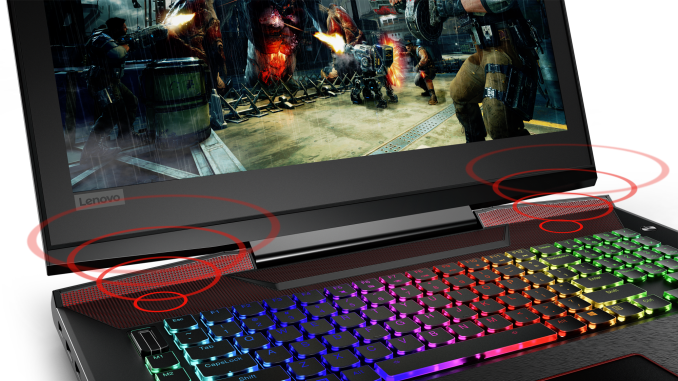
Meanwhile, two features of the Y920 that Lenovo is especially proud of are the audio sub-system featuring two JBL speakers and a subwoofer that carries the Dolby Home Theatre badge as well as an RGB LED-backlit mechanical keyboard.
With its 17” display, the Legion Y920 does not belong to what is now called ultra-portable gaming laptops category: it weighs 4.6 kilograms and its thickness is 36 mm, which is a result of using ABS plastic as the primary material for the chassis. Large dimensions enabled Lenovo to install a 90 Wh battery and could also let the manufacturer equip the laptop with a more advanced cooling system to boost overclocking potential of the Core i7-7820HK CPU. Unfortunately, Lenovo does not disclose any details about the cooling of the Legion Y920, but large dimensions, in general, mean more air.Lenovo Legion Y920 i7-7700HQ i7-7820K Display 17.3" IPS panel with 1920×1080 resolution and 75 Hz refresh CPU Core i7-7700HQ (4C/8T, 6 MB, 2.8/3.8GHz) Core i7-7820HK (4C/8T, 8 MB, 2.9/3.9GHz) Graphics NVIDIA GeForce GTX 1070 with G-Sync support RAM 16 GB DDR4 Storage Up to 512 GB SATA SSD
1 TB HDD (optional)Wi-Fi Rivet Killer Wireless-AC 2×2 802.11ac Wi-Fi Bluetooth Bluetooth 4.1 Ethernet Rivet Killer E2x00 GbE controller USB 4 × USB 3.0 Type-AThunderbolt 1 × USB Type-C Thunderbolt 3 connectorDisplay Outputs 1 × DisplayPort1× HDMIKeyboard Mechanical backlit keyboard with RGB LEDs and programmable buttons Audio 2 × 2 W JBL speakers1× 3 W subwooferOther I/O Microphone, audio jacks, webcam (720p), card reader Battery 90 Wh Li-Polymer Dimensions Width: 425 mm/16.7"
Depth: 315 mm/12.4"
Thickness: 36 mm/1.41"Weight 4.6 kilograms/10.14 lbs Price Starts at $2700 or €2600, depending on configuration and market
Lenovo’s Legion Y920 will hit the market in EMEA this month and will start from €2,599.99 (including VAT). The machine will be available in the U.S. in June for the price of $2,699.99 for the base configuration.
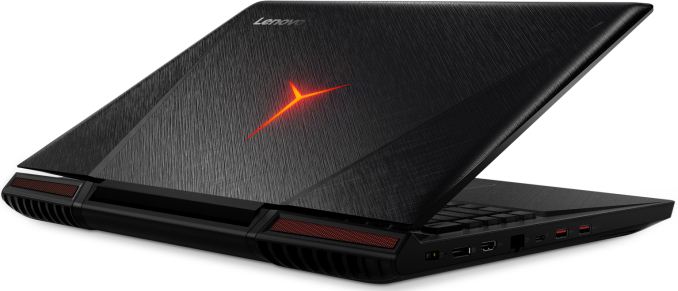
Gallery: Lenovo Legion Y920





Related Reading:
- Lenovo Launches Legion Branded Gaming Laptops
- Acer Announces Predator Triton 700 Gaming Laptop: Core i7, GeForce GTX 10 Series, & 1 TB SSD
- Acer Announces The Acer Predator 21 X: 21-Inch Curved Screen Gaming Notebook
- Razer Blade Gets Core i7-7700HQ, Adds 4K Touchscreen, 1 TB SSD Options
More...
-
05-27-17, 07:54 AM #7005
Anandtech: TechInsights Publishes Preliminary Analysis of 3D XPoint Memory
Now that the Intel Optane Memory M.2 SSDs are readily available on the open market, anyone with an electron microscope and the skills to use it can begin to probe the secrets of 3D XPoint memory that Intel and Micron have been keeping tightly under wraps since announcing the new technology in August 2015. The reverse engineering experts at TechInsights have been doing just that, and they recently published their initial findings.
With some of the first high-resolution die photographs of 3D XPoint, TechInsights has provided precise measurements of the die size and memory density. The 128Gb 3D XPoint die is 206.5 mm2, much larger than is typical for modern NAND flash or DRAM but comparable to Intel's 128Gb 20nm planar MLC NAND. A large total die size is typical for Intel and Micron, as they have historically not catered to the mobile market with their NAND flash while competitors like Samsung and Toshiba have strived to ensure their flash will physically fit in devices like smartphones. (That trend is changing with the introduction this year of 64-layer 3D NAND where Intel and Micron are producing both a larger 512Gb TLC part and a smaller 256Gb TLC part.)
The Intel Optane SSD DC P4800X is using memory of similar density to the Intel SSD DC P3700 that it is displacing as the flagship of Intel's SSD product line. When comparing similar chips, die size is a strong predictor of manufacturing cost, but 3D XPoint memory is quite different from NAND flash memory, both older planar NAND or newer 3D NAND. Still, there's some value in noting that the P4800X is arriving with a price tag about 25% higher than the P3700 initially carried. This suggests that the manufacturing process for 3D XPoint is either more expensive than planar NAND or that 3D XPoint yields are not mature enough, but a lot of the markup can also be explained by the lack of high-performance competition for Optane SSDs.
TechInsights calculates that 91.4% of the 3D XPoint die area is occupied by the memory array itself. This is a much higher figure than for NAND flash, where the record is 84.9% for Intel/Micron 3D NAND with its "CMOS under the array" design that puts a large portion of the peripheral circuitry underneath the memory array instead of alongside. Samsung's current 48-layer 3D V-NAND manages an array efficiency of just 70%, and 3D NAND from Toshiba and SK Hynix has been comparable. This means that once Intel gets around to increasing they layer count in future generations of 3D XPoint memory, they should be able to get much closer to the ideal capacity scaling than 3D NAND memory can currently achieve.
The analysis from TechInsights confirms that 3D XPoint memory is manufactured using a 20nm process, with the same pitch in both the bitline and wordline directions of the memory array. The DRAM market is only just moving beyond this milestone, so comparing the density of 3D XPoint to current DRAM highlights the fundamental capacity advantage 3D XPoint enjoys: around 4.5 times higher density compared to typical 20nm DRAM, and about 3.3 times higher than the most advanced 1Xnm DDR4 on the market. This gap is likely to widen with future generations of 3D XPoint.
The materials and construction of an individual 3D XPoint memory cell have not been fully analyzed, but it appears to be a phase change memory element with a doped chalcogenide selector switch. The 3D XPoint memory array is constructed between the fourth and fifth metal interconnect layers above the silicon die.
More...
-
05-27-17, 11:10 AM #7006
Anandtech: Dell Launches 'VR Ready' XPS 27 AIO: 4K, Core i7-7700, Radeon RX 570, 10 S
Dell has launched a new version of their XPS 27 all-in-one gaming PC. The VR Ready flavor of the XPS 27 has the same 4K display and the same 10-speaker audio sub-system as the latest iteration of the large XPS AIO, but is powered by a more powerful CPU from Intel along with AMD’s discrete Radeon RX 570 graphics board.
AIO PCs have existed for decades, with their continued popularity fueled by their compact, desk-sized footprint. In the recent years demand for higher performance and even gaming-grade all-in-ones increased noticeably, and manufacturers started to offer AIOs with rather powerful hardware. In fact, in early 2016 several PC makers even introduced Mini-ITX-based AIOs with top-of-the-range discrete graphics cards aiming at customers seeking for maximum performance.
Dell’s new XPS 27 with the VR Ready badge are designed for gamers with average requirements for performance. The systems are still considerably more powerful than their predecessors launched earlier this year are because they do not use integrated or mobile graphics, but rely on AMD’s Radeon RX 570 (2048 stream processors, 128 texture units, 32 ROPs, 256-bit memory bus, etc.) graphics adapter with 8 GB of memory. Meanwhile, the key feature of the latest XPS 27 remained intact: the audio sub-system with 10 speakers (six on the front, two down firing and two radiating) designed to enable surround sound without using bulky external audio equipment.
The VR Ready versions of the Dell XPS 27 are based on Intel’s Core i7-7700 CPU as well as the H170 PCH. By default, the systems are equipped with 16 GB of DDR4-2133 memory, but that is upgradeable to 64 GB. As for storage, the PCs have one M.2 slot (PCIe 3.0 x4) as well as two 2.5” bays for HDDs or SSDs, all accessible to the end user. When it comes to connectivity, the Dell XPS 27 feature 802.11ac Wi-Fi, Bluetooth 4.x, a GbE port, five USB 3.0 Type-A headers, one HDMI output, one DisplayPort 1.2, two Thunderbolt 3 ports (USB Type-C), an SD/MMC card reader, a 720p webcam with an IR sensor for facial recognition, a microphone and so on. Overall, there are plenty of ports to plug-in additional peripherals, including various VR gear.
All Dell XPS 27 AIO PCs are constructed of CNC-machined aluminum and come with UltraSharp displays with a 4K (3840×2160) resolution. Meanwhile, computers with touch-enabled screens also feature articulating stands for added convenience. The stand comes at an extra cost, so some gamers may prefer to install a larger SSD and/or more memory and skip the touch option.Dell XPS 27 7760 'VR-Ready' Specifications Non-Touch Touch-Enabled Display 27" IPS with 3840×2160 resolution
1.07 billion colors, 100% Adobe RGB, 350-nit brightnessCPU Intel Core i7-7700
4C/8T, 3.6/4.2 GHz
8 MB cache
65 WPCH Intel H170 Graphics AMD Radeon RX 570 with 8 GB of GDDR5
2048 stream processors, 128 texture units, 32 ROPs, 256-bit memory busMemory 16 GB of DDR4-2133 (four slots in total, upgradeable to 64 GB) Storage 2 TB HDD
32 GB caching SSD (M.2)512 GB SSD (PCIe 3.0 x4) Wi-Fi IEEE 802.11ac Wi-Fi + BT 4.x Ethernet GbE Display Outputs 1 × HDMI
1 × DP 1.2Audio 10 speakers
1 × audio outUSB 5 × USB 3.0 Type-A (5 Gbps, one supports PowerShare)
2 × Thunderbolt 3 (USB Type-C)Other I/O 720p webcam with RGB and IR sensors
SD/MMC card readerDimensions 625 mm / 24.6" × 435 mm / 17.1" × 80 mm / 3.16" Stand regular articulating stand OS Windows 10 Home Windows 10 Home or Pro
At present Dell offers two versions of the VR Ready XPS 27 featuring Intel’s Core i7-7700 CPU and AMD’s Radeon RX 570 GPU, but different storage configurations and touch support. The model with a 2 TB HDD and 32 GB caching SSD costs $1999.99, whereas the model with a 512 GB PCIe SSD, a touchscreen display with articulating stand and optional Windows 10 Pro comes at $2,649.99.
Gallery: Dell XPS 27 7760 'VR-Ready'_thumb.png)
_thumb.png)




Related Reading:
- ASUS Launches the Zen AiO ZN270IE: A 27-inch Full HD Core i7 All-In-One
- ASUS Designo Curve MX34VQ Incoming: 34" Ultrawide Curved Display with Qi Charging
- The Microsoft Surface Studio Review
- Microsoft Announces the Surface Studio: 28-inch AIO with Touch, Pen, 4500x3000, Skylake, GTX 980M
- CES 2016: 34-inch 3440x1440 AIO Hands-On at GIGABYTE
More...
-
05-28-17, 11:41 PM #7007
Anandtech: Exploring DynamIQ and ARM’s New CPUs: Cortex-A75, Cortex-A55
Another year, another TechDay, and another ARM facility (this time in Cambridge, UK)—can only mean new ARM IP. Over the span of several days, we got an in-depth look at its latest technologies, including DynamIQ, the Mali-G72 GPU, the Cortex-A75, and (yes, finally) the successor to the A53: Cortex-A55.
More...
-
05-29-17, 01:12 AM #7008
Anandtech: ASUS Computex 2017 Press Conference Live Blog
We are live from ASUS' press conference at Computex 2015. As usual, the company will announce a number of new products that it will start to sell in the coming months and quarters. Products announced by ASUS usually represent the industry's trends, so if you want to take a glimpse at the near future of personal computing, join in.
More...
-
05-29-17, 09:42 AM #7009
Anandtech: ARM Announces Mali-G72: Bifrost Refined for the High-End SoC
While the bulk of the focus in today’s ARM announcements is on major launch of the first CPU cores to support ARM’s DynamIQ topology – the Cortex-A55 and Cortex-A75 – ARM’s GPU division isn’t sitting by idly. Rather, today the company is giving their GPU IP a timely refresh for the year with the announcement of the Mali-G72. ARM’s new high-end, high-performance GPU design, the Mali-G72 supplants the Mali-G71, undergoing a design revision and optimization against Mali-G71 to further improve performance and power efficiency for high-performance SoCs.
Coming off of last year’s launch of the Mali-G71 and its underlying Bifrost GPU architecture, ARM isn’t doing anything quite as wild this year. The company is now invested into Bifrost for the long haul, so like the Midgard architecture before it, the company will be continuing to optimize, tweak, revise, and otherwise refresh the architecture to meet the needs of their customers a year or two down the line. Mali-G72 in turn is the first such revision of the architecture, taking advantage of what ARM learned when designing the G71 in order to improve on their high-performance GPU design.
At the architectural level then, Mali-G72 doesn’t make any radical alterations to the Bifrost architecture. The SIMT quad based execution model stands firm, and the ratios of the various functional blocks have not changed. So clock-for-clock, Mali-G72’s fundamental, throughput on-paper is unchanged from Mali-G71.
That said, the devil is in the details. And the details on Mali-G72 are all about optimizing. While ARM hasn’t made any high-level changes, the company has made a number of smaller, low-level changes that add up to a more significant impact for elevating Mali-G72 over Mali-G72. As a result the company is promoting the newer GPU design as offering 25% greater energy efficiency and 20% better performance density than Mali-G71, leading to a 40% performance improvement. Area and power efficiency are of course the lifeblood for mobile GPUs, and while the high-performance designs like the Mali-G71/G72 aren’t designed to push the envelope on area efficiency quite as much – favoring high performance instead – SoC vendors are all for trimming precious mm to reduce costs.
ARM isn’t offering a great deal of information on where all of these optimizations come from – it’s very much the sum of a large number of small changes – but at have provided us some key pieces of information. In particular, ARM has actually removed some complex instructions from their architecture, instead executing them over multiple clocks as other, simpler instructions. Excising instructions one big way to save on die space, allowing ARM to throw out the transistors that would be needed to execute those instructions. Obviously this is a double-edged sword – the emulated instructions are slower – but instructions that aren’t used very often likely aren’t worth the silicon. In this case I suspect we’d be looking at some especially esoteric things, such as atomic floating points.
ARM has also been doing some tinkering under the hood to improve the throughput of other desirable complex operations. This includes things such as the reciprocal square root and other reciprocal functions, which can now complete faster, but only for graphics (an interesting distinction, since the IEEE 754-compliant operation for compute remains unchanged). This goes hand-in-hand with a more broad set of tweaks to the internal datapaths for the ALUs, though besides further optimizing how data moves between the FMA and ADD/SF units, ARM hasn’t said much more.
However when it comes to overall performance efficiency, the big changes on Mali-G72 aren’t at the instruction level, but rather the cache level. All-told, ARM has tweaked buffers and caches at pretty much every step of the way. This includes making the L1 cache, the writeback cache, and the tiler buffer all larger. Meanwhile the instruction cache is unchanged in size, but ARM has tweaked the logic of it (presumably the algorithm used) to improve utilization by reducing misses.
All of this cache-related tweaks are geared towards the common goal of reducing memory bandwidth usage. Not only is this important for scaling performance with larger GPUs – GPUs get more powerful faster than memory bandwidth increases – but it improves power efficiency as well, as memory operations are relatively expensive. The overall performance improvement from the larger caches reducing misses certainly doesn’t hurt, either.
ARM in turn is particularly pitching the benefits of the cache changes for both graphics and machine learning tasks. In the case of graphics, their case study of choice found a 42% reduction in how much off-chip memory bandwidth was used in G-buffer writes, primarily due to the larger write buffer. Bear in mind this is likely a case of cherry-picking, but ARM isn’t off-base in that more complex scenes push the limits of smaller buffers (finally justifying the area cost of larger buffers). Meanwhile on the machine learning front, ARM is reporting a 13% improvement in SGEMM benchmark energy efficiency (and 17% for HGEMM thanks to the combination of cache changes and the earlier mentioned instruction changes. One of ARM’s big pushes for their entire lineup of SoC IP is for inference at the edge, so even small improvements help their standings overall.
Wrapping things up, we should see ARM’s new Mali-G72 design show up in devices in another year or so. While ARM isn’t responsible for the actual silicon their IP goes into – and as such, this is ultimately in the hands of SoC vendors – the Mali-G71 did show up on the HiSilicon Kirin 960 only about 8 months after its launch. So if a partner wants to push it, they could do Mali-G72 in a similar amount of time. Though something closer to Samsung’s roughly 1 year cadence is likely to be more par for the course.
Gallery: Mali-G72 Press Deck





More...
-
05-29-17, 10:58 AM #7010
Anandtech: Asus Announces VivoBook Pro 15 N580: Intel Kaby Lake CPU, up to 4K Display
With Computex now in full swing, earlier today Asus took the wraps off of their latest VivoBook laptop, the VivoBook Pro 15 N580. Starting at $799, the 15-inch brushed aluminum laptop comes with an Intel quad-core processor, and NVIDIA GTX 1050 graphics, with an optional 4K display.
Of the information Asus has released so far, the company has released the base price, but not the prices of the higher-end configurations. At the $799 base model will include an Intel Core-i5 7300HQ CPU, 500 GB HDD, and a 1080p display. Meanwhile the high-end model will have a Core-i7 7700HQ, 4K full sRGB screen, NVIDIA GTX 1050 graphics, 16GB of RAM, and both a 512GB PCIe SSD and a 2TB hard drive. Asus will also be including Intel’s Optane Memory for faster storage performance (though it’s not clear if this is just for HDD models or all models).
Considering its plethora of high-end components, the VivoBook Pro's 4.85-pound weight and 0.75-inch thickness are quite reasonable. The VivoBook Pro uses a dual-fan system to keep its powerful components from getting too hot. During a brief hands-on, the laptop felt solid and sturdy in my hands and its metal deck was pleasantly cool to the touch.Asus VivoBook 15 N580 Processor Intel Core i5-7300HQ (4C/4T, 2.5-3.5GHz, 6MB L3, 14nm, 45w)
Intel Core i7-7700HQ (4C/8T, 2.8-3.8GHz, 6MB L3, 14nm, 45w)Memory Up To 16 GB (2x SO-DIMM) Graphics Intel Core
Intel HD Graphics 630 (24 EUs)
(Optional) NVIDIA GeForce GTX 1050
(640 CUDA Cores)Displays 15.6" 1080p
(Optional) 15.6" 1080p, 178° Viewing Angle
(Optional) 15.6" 1080p, 100% sRGB, 178° Viewing Angle
(Optional) 15.6" 4K, 100% sRGB, 178° Viewing AngleStorage HDD: 500 GB, 1 TB, 2TB
SSD (SATA): 128 GB, 256 GB, 512 GBNetworking 802.11ac, 2x2:2, 866Mpbs Max, 2.4 and 5GHz
Bluetooth 4.2Audio Stereo Speakers (Harman Kardon Certified) Battery 47 Whr Right Side 2x USB 2.0 Type-A
Headset Jack
SD Card Reader
Kensington LockLeft Side USB 3.0 Type-A
USB 3.0 Type-C (w/DP Support)
RJ45 Slim Port
HDMDimensions 380 x 256 x 19.2 mm Weight Non-Touch: 1.99kg
Touch: 2.29kgPricing $799 USD and up
The VivoBook's backlight keyboard felt sturdy snappy under my fingers and didn't even have a hint of flex. Its buttonless touchpad had just the right amount of friction and resistance for each click.
Asus claims that the optional 4K screen on the VivoBook covers an impressive 100 percent of the sRGB color gamut. In my brief time with the laptop, it was difficult to tell how vibrant the colors were as the background and icons the company displayed were rather bland.
The VivoBook Pro doesn't skimp on ports. Its left side contains an Ethernet port, a USB 3.0 connector, HDMI out and a USB Type-C port. The right side houses two more USB 3.0 ports, an SD card reader and a 3.5mm audio jack. It's a shame that Asus didn't put a Thunderbolt 3 port on this laptop, but that would have likely added to the cost.
Asus hasn't announced a release date for the VivoBook Pro. However, depending on just what the base configuration is like and how much the higher-end models cost, this laptop could be a great buy for design students or anyone that needs to do creative work, without breaking the bank.
Avram Piltch Contributed to this Report
More...
Thread Information
Users Browsing this Thread
There are currently 20 users browsing this thread. (0 members and 20 guests)




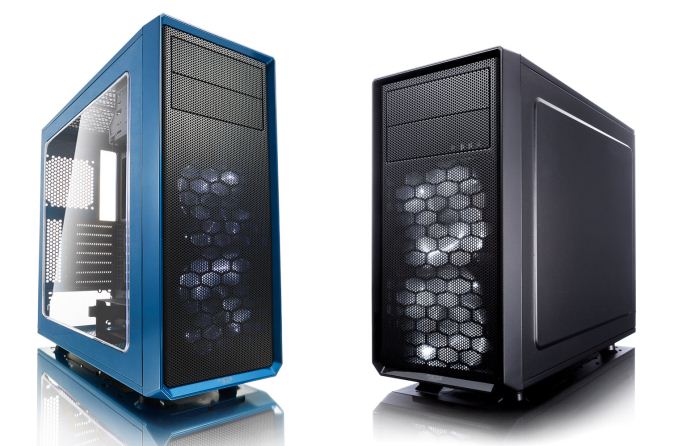
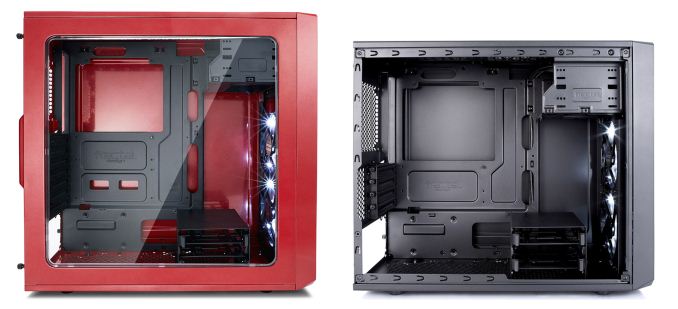

 Quote
Quote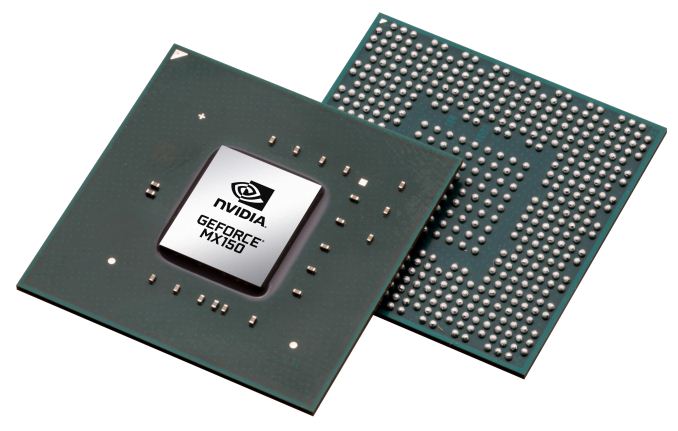


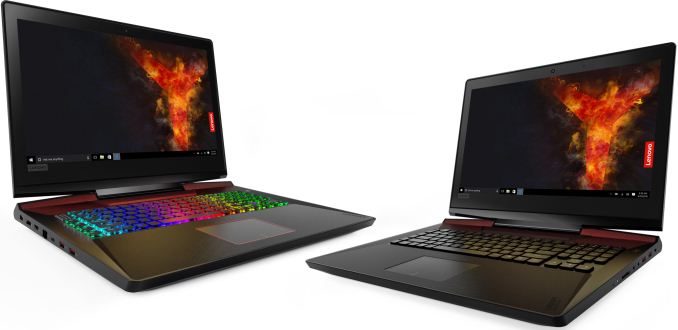
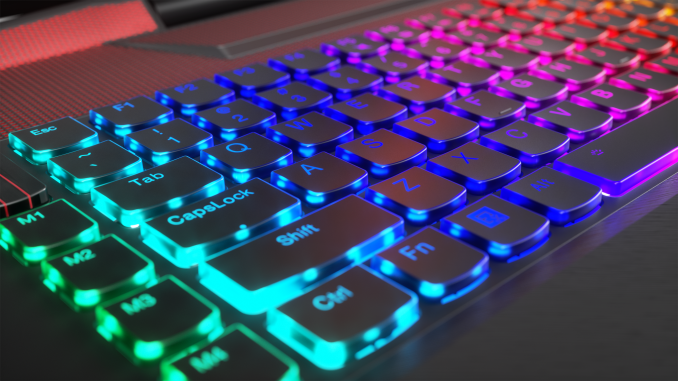
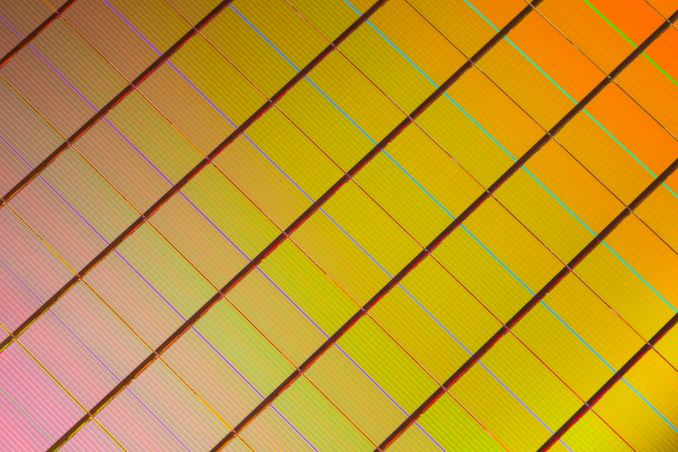

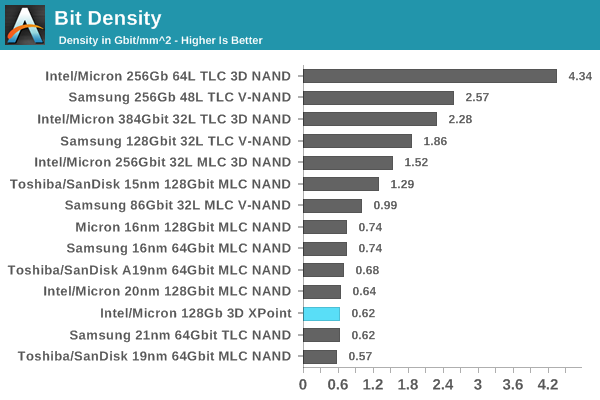


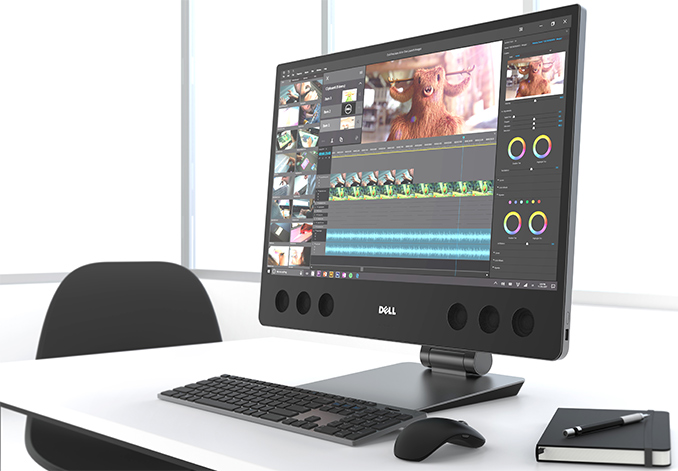
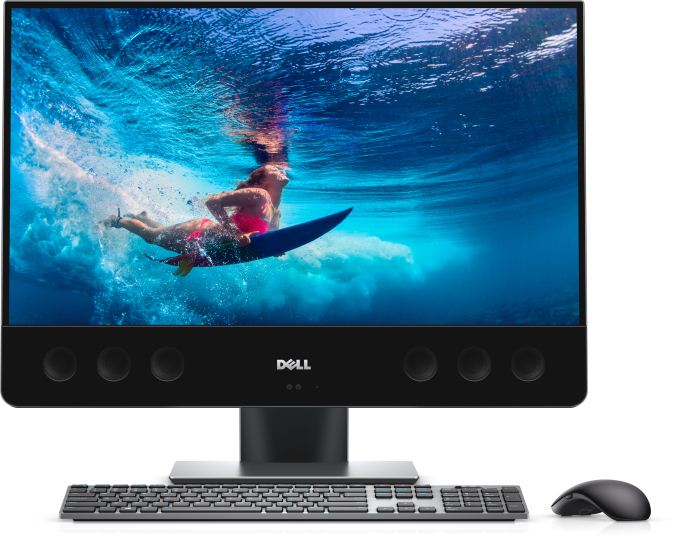
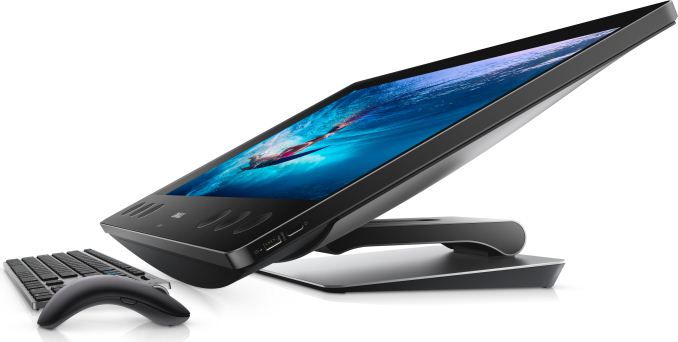

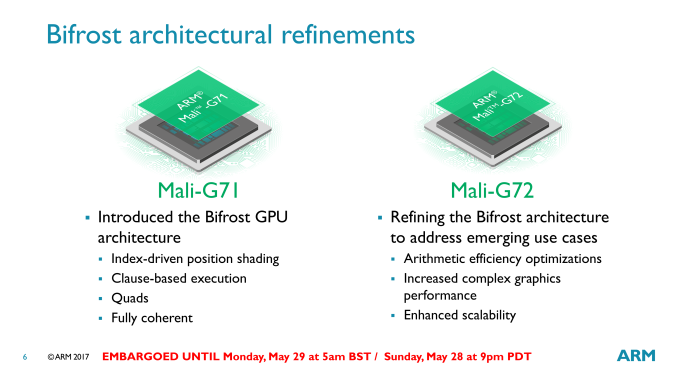
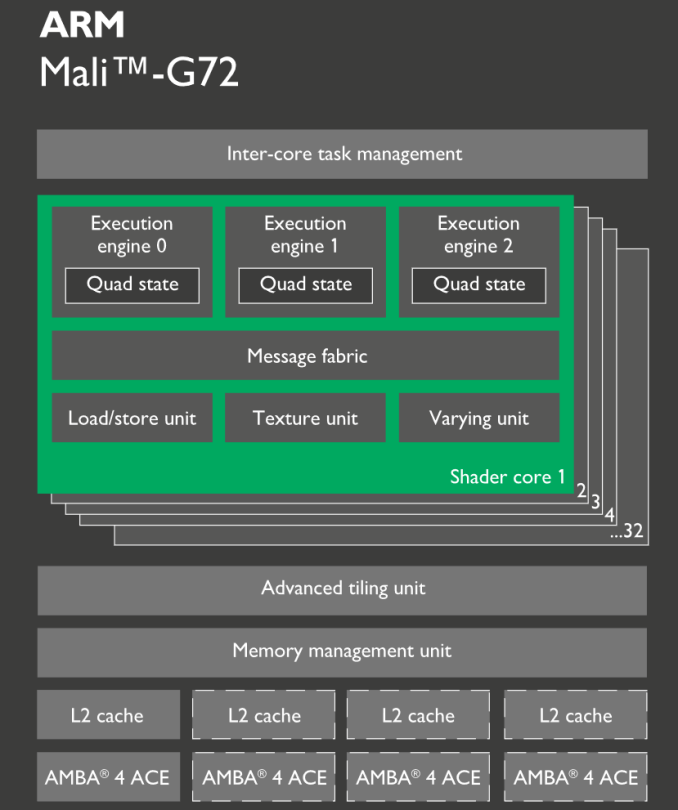
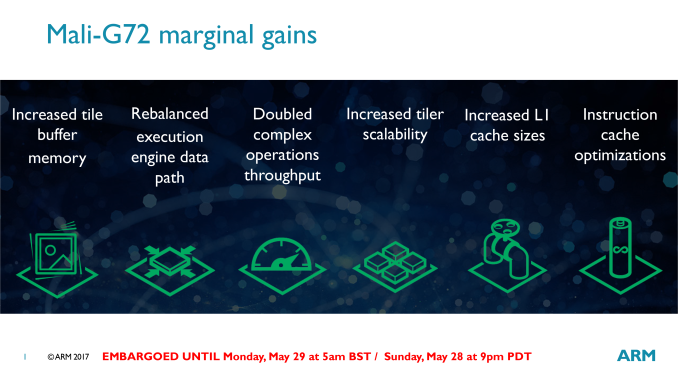
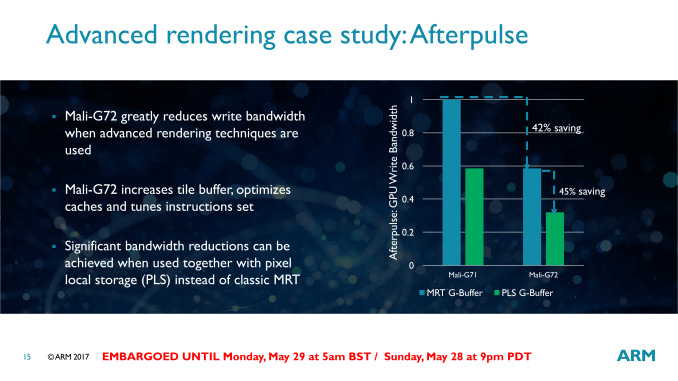
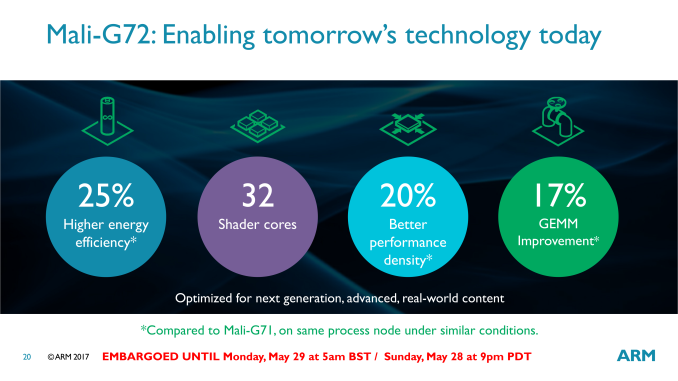


















Bookmarks